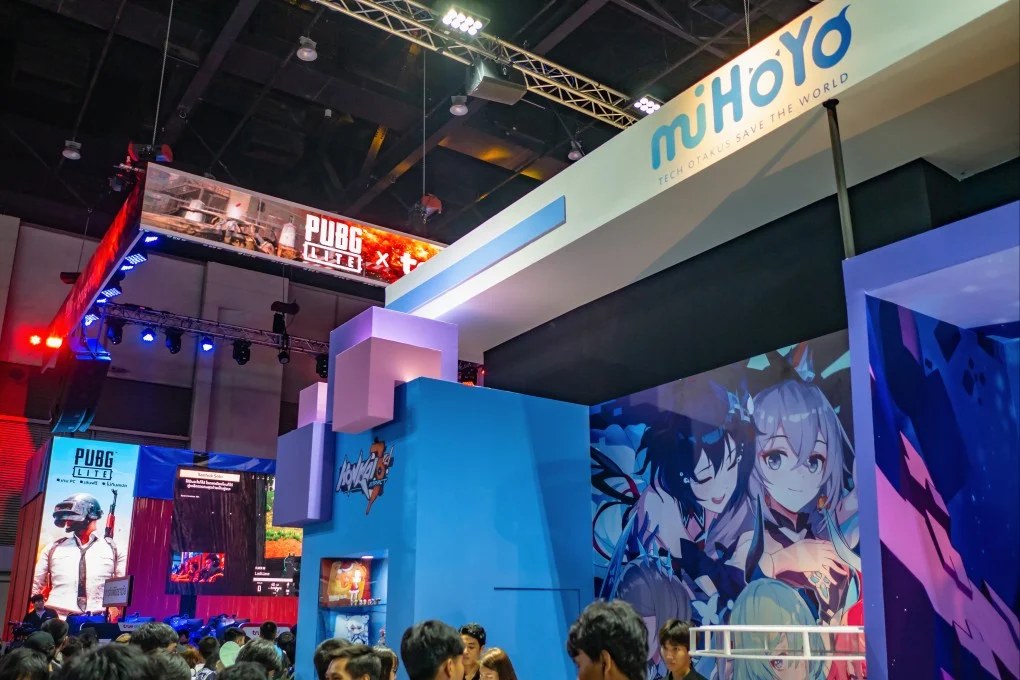China’s Gaming Power Goes Global
By
Rachel Steinberg
Last updated:
November 20, 2025
First Published:
November 20, 2025

Photo: South China Morning Post
China’s Rapid Rise in Global Gaming
China’s latest blockbuster game “Where Winds Meet” amassed more than two million players within the first 24 hours of its international release, marking another milestone in the country’s rapidly growing influence on the global gaming industry. Published by NetEase and launched worldwide on PlayStation and PC, the title immerses players in a richly detailed 10th century China, blending martial arts traditions with open world storytelling.
The release follows a string of successful Chinese exports, including “Black Myth Wukong,” which sold over ten million copies within its first three days earlier this year. These breakout hits signal a clear shift in the $189 billion global gaming industry, where Chinese studios are steadily gaining market share in PC and console markets traditionally dominated by Western developers.
The Push Toward Global Expansion
Chinese gaming firms are investing heavily in international growth, driven by both market opportunity and strategic necessity. Will Wang of BAI Capital highlighted that core console gamers are overwhelmingly based outside China, pushing local studios to design globally oriented titles from the outset. NetEase said the concept for “Where Winds Meet” was envisioned roughly five years ago as a global product rather than a domestic-first release.
China’s gaming ecosystem has evolved beyond entertainment into a broader innovation engine. Venture investment in the sector includes AR hardware, AI-powered animation tools, and immersive technologies. Even Nvidia, now synonymous with artificial intelligence, began as a graphics hardware provider serving PC gamers — a reminder of how gaming often seeds wider technological advancement.
Gamification is also spreading beyond the industry itself. Companies like The New York Times and Duolingo increasingly use game mechanics to boost engagement and subscriptions, reinforcing gaming’s role as a cultural and economic force.
Growing International Attention and Investment
China’s expanding soft power in gaming has caught the eye of major global investors, including Saudi Arabia’s Savvy Games Group, owned by the Public Investment Fund. Executives visited China this month to attend the League of Legends World Championship in Chengdu and the Honor of Kings KPL Grand Finals in Beijing.
Savvy Games has already spent nearly five billion dollars acquiring Scopely, the creator of “Monopoly Go!”, and continues to seek opportunities in both Eastern and Western markets. The firm believes China’s massive mobile gaming sector — home to hundreds of millions of daily active users — represents one of the most lucrative targets for long term growth.
Mobile titles remain dominant. Honor of Kings recently reported an average of 139 million daily players inside China, and more than 260 million monthly active users worldwide. The game’s recent championship in Beijing broke a Guinness World Record with 62,000 attendees, selling out the Bird’s Nest stadium in only 12 seconds.
A Tight-Knit Global Ecosystem
Despite its vast scale, the esports and gaming investment ecosystem remains closely interconnected. Savvy Games owns a significant stake in Hero Esports, which is also backed by Tencent. Tencent itself controls Riot Games, the studio behind League of Legends, and owns Honor of Kings through its subsidiaries. The company reported international gaming revenue growth of 43 percent in its most recent quarter, reaching nearly 21 billion yuan.
BAI Capital’s Wang notes that sustained leadership in gaming requires capital, creative risk tolerance and specialized talent — advantages that large Chinese firms like Tencent and NetEase increasingly possess. He also believes gaming will continue to absorb more global leisure time as automation and AI transform work patterns.
Global Success and Cultural Reach
“Where Winds Meet” has quickly become one of the most-played titles on Steam, ranking in the global top five this week. Over 9,000 English-language reviews rated the game “very positive,” particularly praising its visual design and cultural depth. While players noted some interface complexity, this had little impact on its rapid popularity.
Chinese developers are also benefiting from advances in translation, localization tools and generative AI, which help overcome traditional barriers such as language and cultural interpretation. These technologies make it easier for studios to release deeply Chinese narratives without compromising accessibility for international players.
Market Landscape and Broader Economic Context
As China’s gaming sector expands internationally, its financial markets show mixed performance. The CSI 300 is on track for a second consecutive weekly decline but remains up more than sixteen percent year to date. Hong Kong’s Hang Seng Index fell nearly three percent this week as part of a global tech sell-off, though it is still up over twenty eight percent this year. Meanwhile, the offshore yuan trades near 7.11 to the US dollar.
China’s broader economic outlook remains stable. Analysts foresee renewable energy generating forty percent of the country’s power by 2030, and several research firms believe China remains on track to meet its 2025 growth targets without major new stimulus.
China’s gaming industry has entered a new phase, where high quality production, global ambition, rising cultural confidence and integrated investment networks are positioning Chinese titles at the center of global entertainment. From stadium-filling esports events to record-breaking launch numbers, Chinese games are shaping what the future of global gaming looks like — culturally, economically and technologically.
Popular articles
Subscribe to unlock premium content
How Adults Are Paying to Experience Silent Daylong Festivals for Mindfulness

The Rise of Ultra-Personalized Scent Memory Experiences Using Olfactory Therapy

Why Some Millennials Are Paying for One-Day Luxury Survival Challenges in Nature

How Adults Are Paying to Experience Silent Daylong Festivals for Mindfulness

The Rise of Ultra-Personalized Scent Memory Experiences Using Olfactory Therapy

How Adults Are Paying to Experience Silent Daylong Festivals for Mindfulness







.png)

